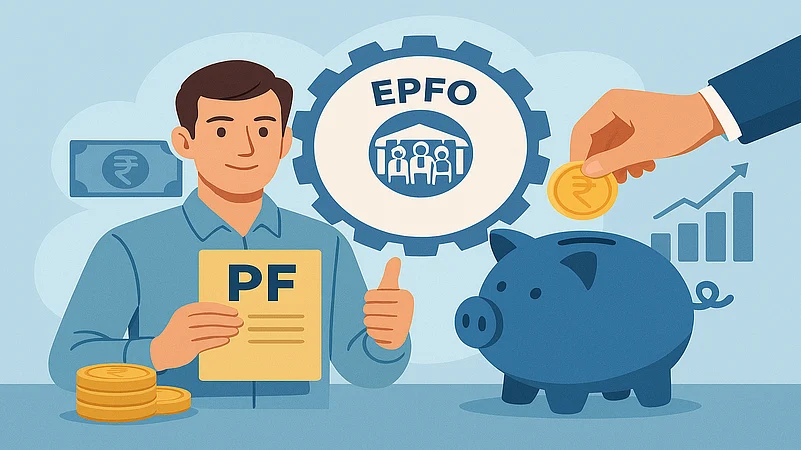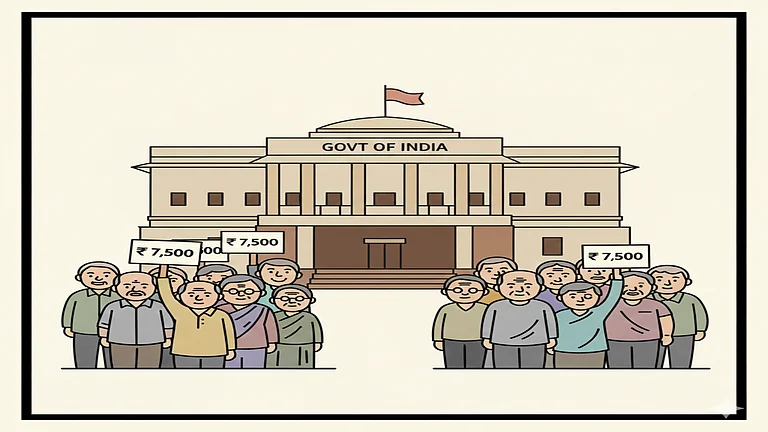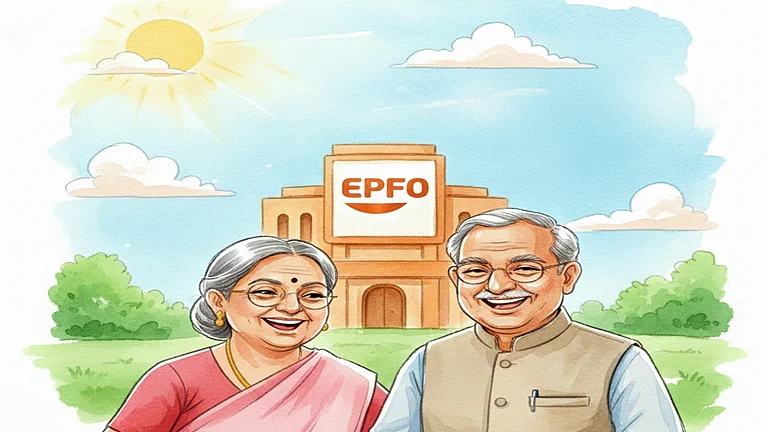
Summary of this article
EPFO launched the Vishwas Scheme to reduce litigation burden on parties.
The scheme reduces penal charges for short periods of up to four months' delay to less than 1 per cent.
Over 6,000 litigations were pending in courts related to EPF dues, as of May 2025.
The Employees’ Provident Fund Organisation’s (EPFO) recent launch of the ‘Vishwas Scheme’ is for the employers. The primary objective of the scheme is to reduce the increasing litigation related to the delayed payment of provident fund dues by the employers. The Union Minister for Labour and Employment, Mansukh Mandaviya, launched the scheme during EPFO’s central Board of Trustees’ meeting in October 2025.
According to the rule, employers are required to deduct the employee provident fund (EPF) from the salary, match the contribution, and remit the amount to the EPFO within the specified time. Failing to do so will result in a penalty for the delayed payment as well as for the duration of the delay. While financial difficulty is not an excuse to delay the payment, eventually, the high rate of penal damages made the parties file litigation, resulting in an excessive backlog of such complaints.
Under this scheme, the CBT has reduced the penal charge rates. Here are the latest and the previous rates:
Penalty Rates
The penal damage rates were notified last in June 2024, when these were reduced to a fixed 1 per cent per month, contrary to the previous graded system. However, Vishwas Scheme brings in grades again for short-period delays. It sets the rate at:
• 0.25 per cent if the default lasts for up to two months
• 0.50 per cent for defaults up to four months
• 1 per cent per month for a longer period of default
Before the 2024 change, the damage penalty rates were:
• 5 per cent for less than 2 months
• 10 per cent for 2-4 Months
• 15 per cent for 4-6 Months
• 25 per cent for more than 6 Months
The rates, before the 2008 period, were even higher, and ranged between 17 per cent per annum to 37 per cent per annum.
Pending Litigation
These higher penal rates and non-settlement led to widespread litigation, so much so that as of May 2025, 6000 litigations were pending with various courts, including the Supreme Court, High Courts, and Central Government Industrial Tribunals (CGITs), with an outstanding penal damage of more than Rs 2,400 crore. At the same time, several more cases, estimated to be around 21,000, are pending with the EPFO.
Vishwas Scheme’s Objective
In short, Vishwas Scheme presents a rationalised structure of penal damages by offering a lower penalty rate for a certain period. The most important part of the scheme is that the matter will be closed once the damages are paid along with any other compliance, wherever necessary.
Note: The Vishwas Scheme is available for six months initially but can further be extended for another six months.
How Will It Benefit Employers And Employees?
The scheme applies to the disputes across various stages of legal process under Section 14B of the Employees' Provident Funds and Miscellaneous Provisions Act, 1952, the cases that have been finalised but not yet paid, and also those where only an initial notice has been issued and the order has not been passed.
Kunal Kabra, founder and CEO, Kustodian.life, a tech firm that provides claim support for EPF-related matters, says that earlier, the system was quite burdensome for employers, especially for long delays. For the changes in the system through Vishwas scheme, he says, “The change simplifies compliance, reduces the financial strain on employers, and encourages timely contributions, ultimately benefiting EPF members by ensuring their funds are deposited regularly.”
The scheme will benefit employers as this could be an opportunity for them to resolve pending disputes, which will reduce their litigation costs and administrative burden. On the other hand, employees will benefit from the faster recovery of dues and quicker reinvestment of their funds, and improved returns.



















